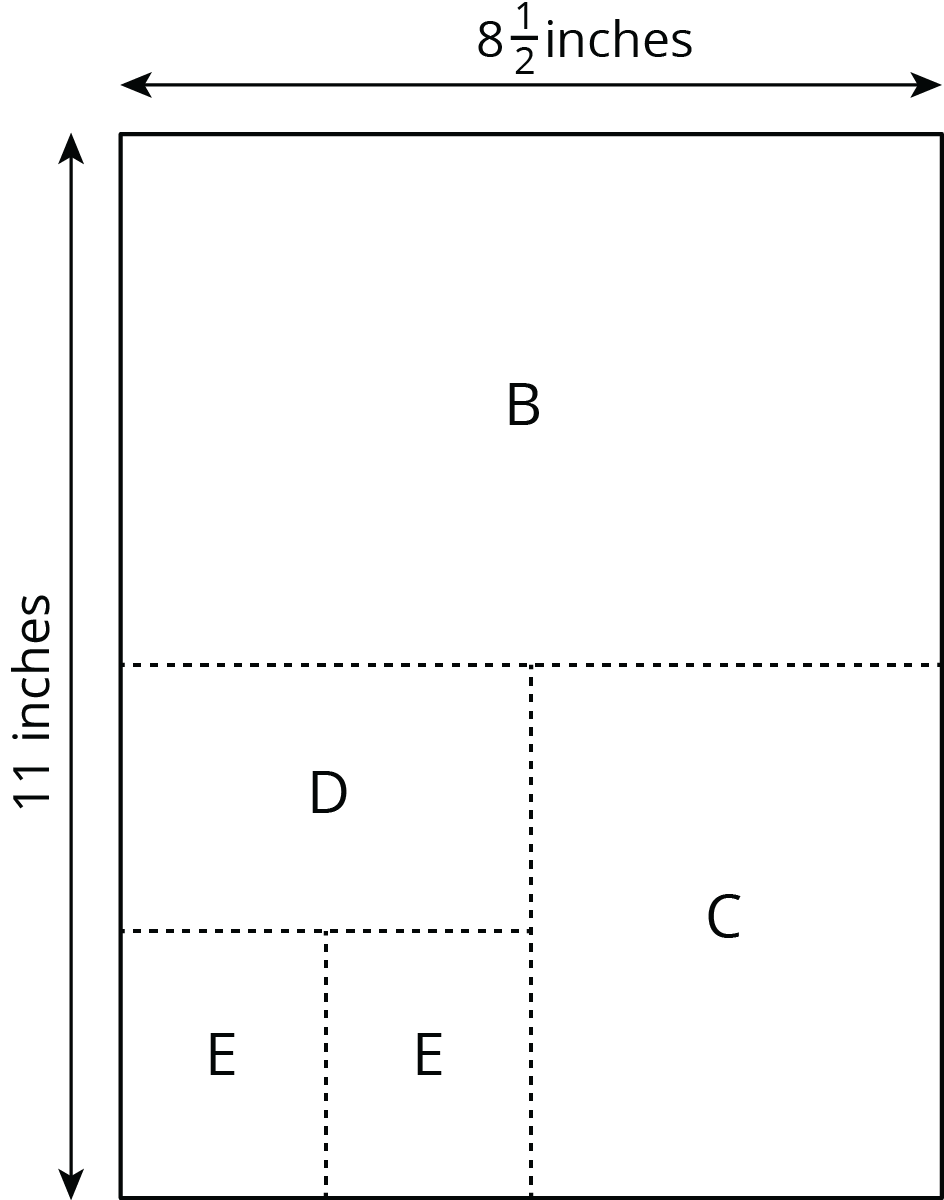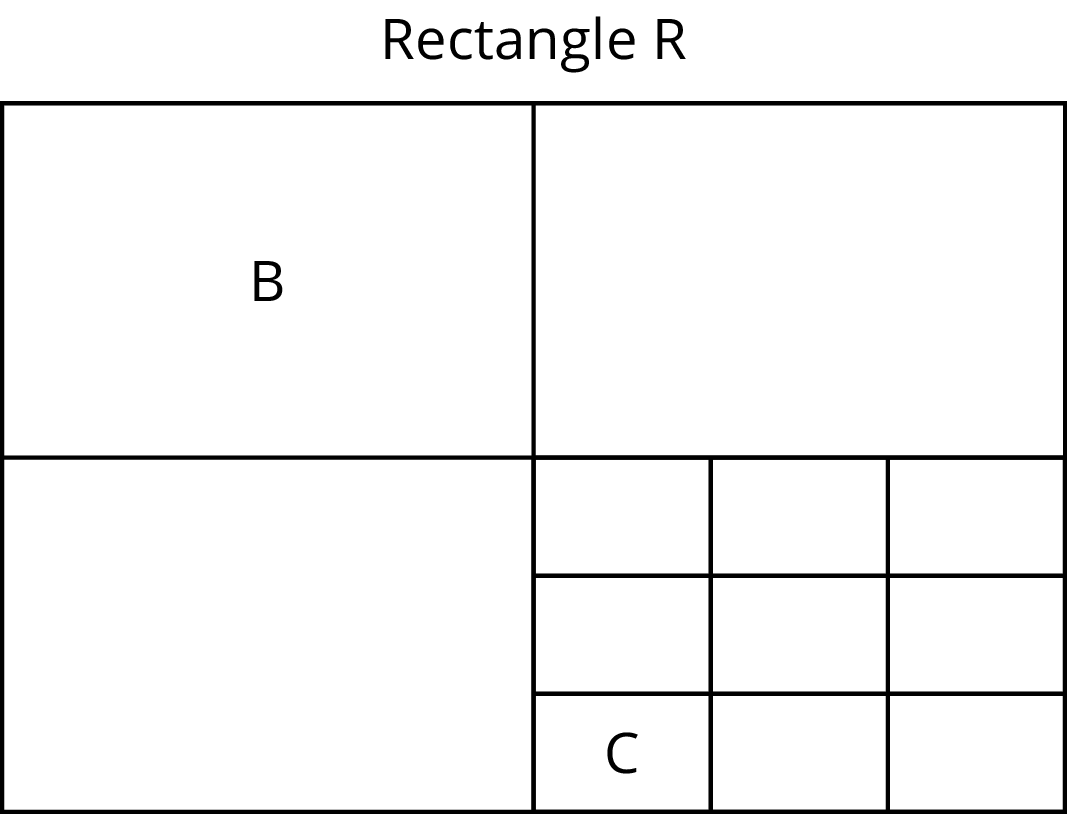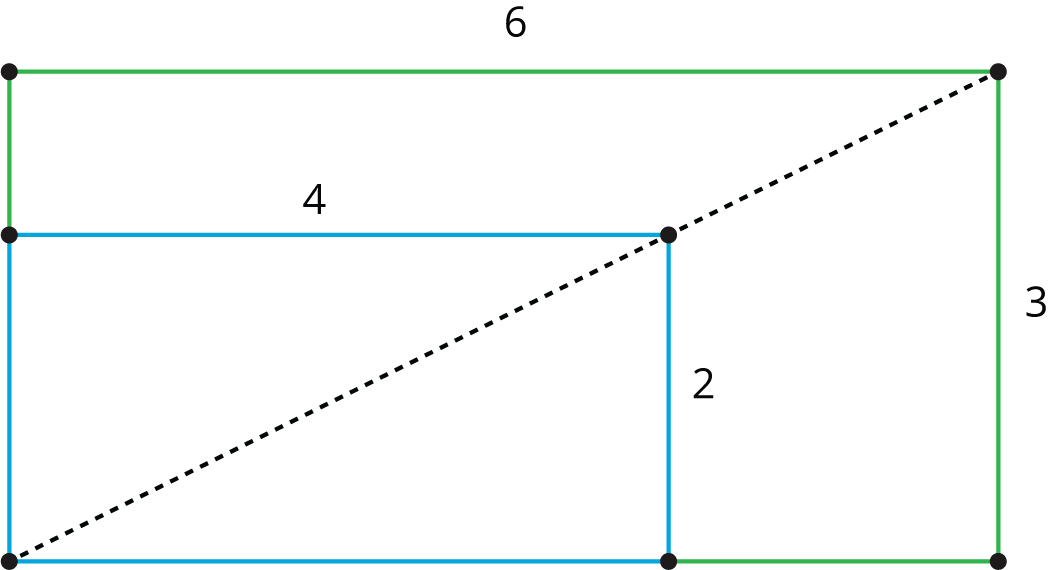1.1: Number Talk: Remembering Fraction Division
Find each quotient. Write your answer as a fraction or a mixed number.
$6\frac14 \div 2$
$10\frac17 \div 5$
$8\frac12 \div 11$
Let’s explore scaling.
Find each quotient. Write your answer as a fraction or a mixed number.
$6\frac14 \div 2$
$10\frac17 \div 5$
$8\frac12 \div 11$
Rectangles were made by cutting an $8\frac12$-inch by 11-inch piece of paper in half, in half again, and so on, as illustrated in the diagram. Find the lengths of each rectangle and enter them in the appropriate table.

| rectangle | length of short side (inches) | length of long side (inches) | |
|---|---|---|---|
| row 1 | A | $8 \frac{1}{2}$ | 11 |
| row 2 | |||
| row 3 | |||
| row 4 |
| rectangle | length of short side (inches) | length of long side (inches) | |
|---|---|---|---|
| row 1 | |||
| row 2 | |||
| row 3 |

Here is a picture of Rectangle R, which has been evenly divided into smaller rectangles. Two of the smaller rectangles are labeled B and C.

Scaled copies of rectangles have an interesting property. Can you see what it is?

Here, the larger rectangle is a scaled copy of the smaller one (with a scale factor of $\frac{3}{2}$). Notice how the diagonal of the large rectangle contains the diagonal of the smaller rectangle. This is the case for any two scaled copies of a rectangle if we line them up as shown. If two rectangles are not scaled copies of one another, then the diagonals do not match up. In this unit, we will investigate how to make scaled copies of a figure.